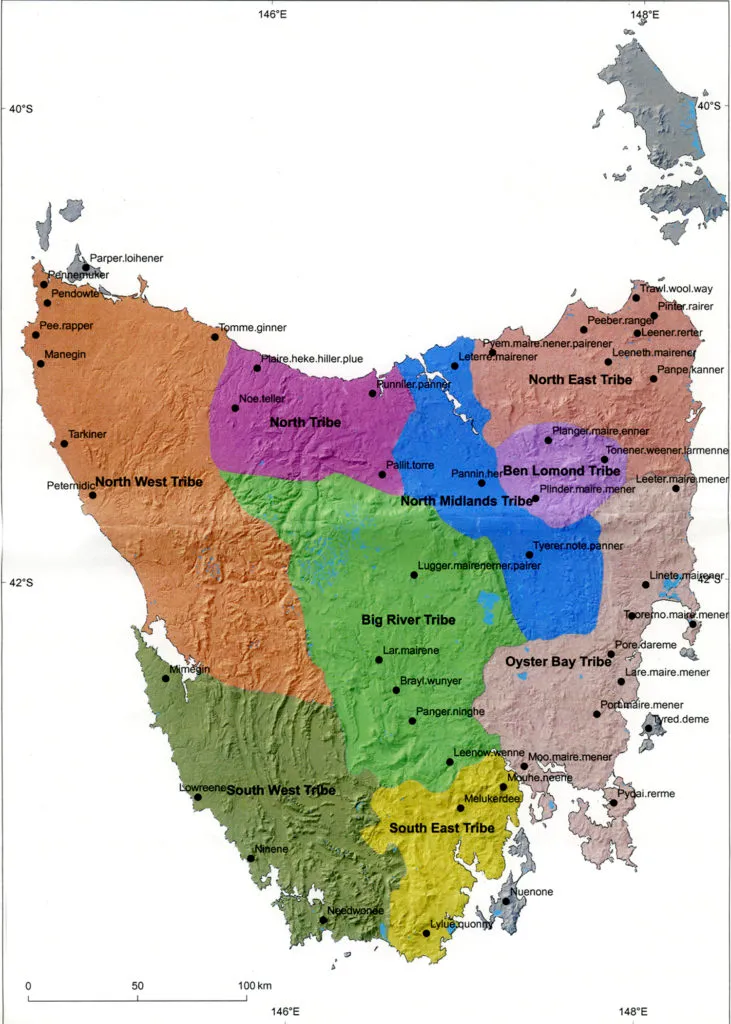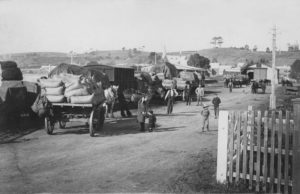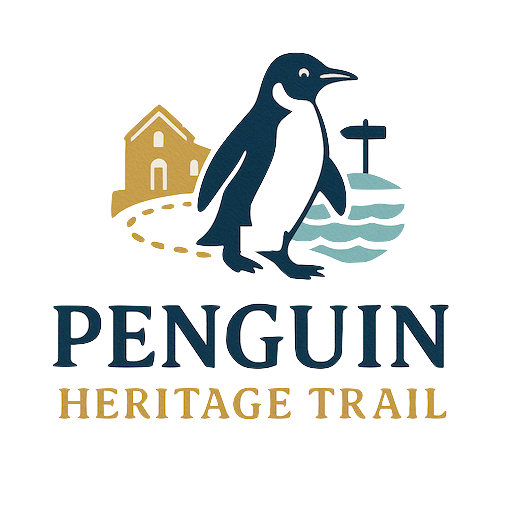Aboriginal History
Acknowledgement of Country
We acknowledge the Traditional Custodians of the land on which Penguin, Tasmania, and Australia are located. We recognise their ongoing connection to the land, its waters and its culture, and we pay our respects to the Elders, both past and present.

The First Tasmanians
Around 12,000 years ago, rising sea levels caused the island of Tasmania to become separated from mainland Australia. By the time the first Europeans arrived in 1803, it is estimated that between 4,000 and 5,000 Aboriginal Tasmanians lived across the island. They continued to care for and manage their land through their deep knowledge of its changing seasons, plants, animals and waterways.
There were approximately 48 groups across Tasmania, belonging to nine socio-linguistic nations and speaking at least four distinct languages. The Northern people, numbering around 200–300 individuals, inhabited the north coast from Port Sorell to Penguin and extended inland to the Surrey Hills and the Great Western Tiers near Quamby Bluff.
Life on Country
Each winter, the people of the north would leave the cold, highlands of the Western Tiers and the flooded plains of the Meander Valley to gather on the milder north coast. Sites such as Port Sorell (Panatana) became important seasonal meeting places for hunting, gathering and ceremonies.
The Northern people also accessed significant ochre deposits in the region. Excavations at the Gog Range ochre mine (Toolumbunner) in the 1980s revealed continuous activity dating back to the 15th century, showcasing a long tradition of cultural and spiritual practices.
The Impact of Colonisation
The process of European colonisation in Van Diemen’s Land (now Tasmania) was particularly violent in the north and north-west. Between 1826 and 1834, historians identified 32 incidents of major conflict, most of which occurred in 1827–1828.
During this period, 28 Aboriginal people were captured by colonial forces and eight were kidnapped by sealers. By 1847, when the 47 surviving Aboriginal Tasmanians were transferred from Flinders Island to Oyster Cove, there were no more Northern people alive. This loss serves as a devastating reminder of the profound impact of colonisation on Tasmania’s First Peoples.

Uluru Statement from the Heart
We support the Uluru Statement from the Heart’s vision of Voice, Treaty and Truth, which calls for a national journey towards justice and recognition for Aboriginal and Torres Strait Islander peoples.
Uluru statement from the heart
Penguin’s History & Story

From Van Diemen’s Land to Tasmania:
The history of Tasmania begins in 1642 when the Dutch explorer Abel Tasman became the first European to sight and land on the island. He named it ‘Van Diemen’s Land’, in honour of the Governor-General of the Dutch East Indies. More than two centuries later, in 1856, the island was officially renamed Tasmania after Tasman himself.
The first European settlers arrived in 1803 when the British established a penal colony at Risdon Cove on the Derwent River, marking the start of Tasmania’s colonial era. This followed exploratory voyages by British and French expeditions competing for influence in the southern seas.
Tasmania at a Glance
Shaped like a heart, Tasmania covers 68,000 square kilometres — about one-third the size of Victoria — and is roughly 296 km long and 70–315 km wide. Today, nearly 40% of the island is protected as national parks and reserves, with around half of this area included on the UNESCO World Heritage List.
Home to around half a million people, Tasmania’s key industries include mining, agriculture, aquaculture, fishing, forestry and tourism, all of which are deeply connected to the island’s natural landscapes and heritage.
The Story of Penguin
The town of Penguin is named after the little penguins that still inhabit the nearby coastline. It was one of the last districts in Tasmania’s north-west to be settled. The first piece of land was purchased in 1861, and the township was officially gazetted in 1875.
Penguin’s early prosperity was tied to the sea. The construction of a wharf in 1870 transformed the town into a bustling port, exporting timber to Victoria’s goldfields and later shipping minerals. The short-lived Penguin Silver Mine and Neptune Mine, both of which opened in 1870, marked the town’s initial forays into mining.
However, the arrival of the railway in 1901 shifted trade and transport across Tasmania, leading to a decline in coastal shipping. Passenger rail services ceased in 1978, although freight trains from Burnie still pass through daily.
Growth and community
Penguin’s first shire council was elected in 1907 and served the community until 1993, when it merged with Ulverstone to form the current Central Coast Council. The town was electrified in 1927, which was a significant milestone that powered local growth.
During the First World War (1914–1918), 107 men enlisted from a local population of just 1,124 — an extraordinary contribution, 26 of whom never returned. Their sacrifice is still honoured deeply within the community.
The Big Penguin and Beyond
In 1975, exactly a century after Penguin was officially proclaimed, the town unveiled its iconic Big Penguin, a symbol of community pride and coastal charm. On 16 April 2025, the Big Penguin was officially added to Tasmania’s Heritage Register in recognition of its cultural and historical significance. Read more on our blog.
Today, Penguin is a vibrant seaside town with a population of around 3,300 according to the 2021 Census. It is celebrated for its quirky character, friendly locals and rich history. From heritage buildings and scenic coastal walks to local markets and penguin-watching experiences, every corner of the town has a story to tell.
Where will our stories take you?




